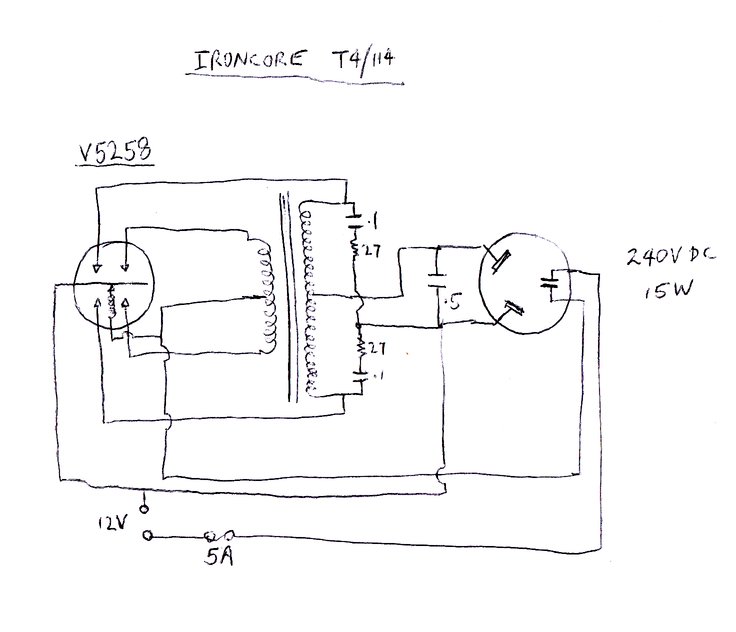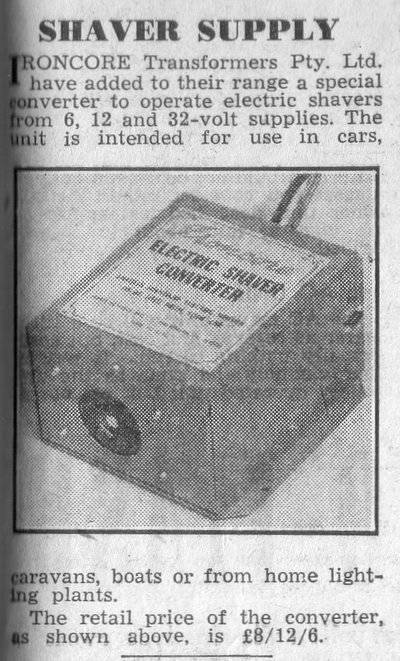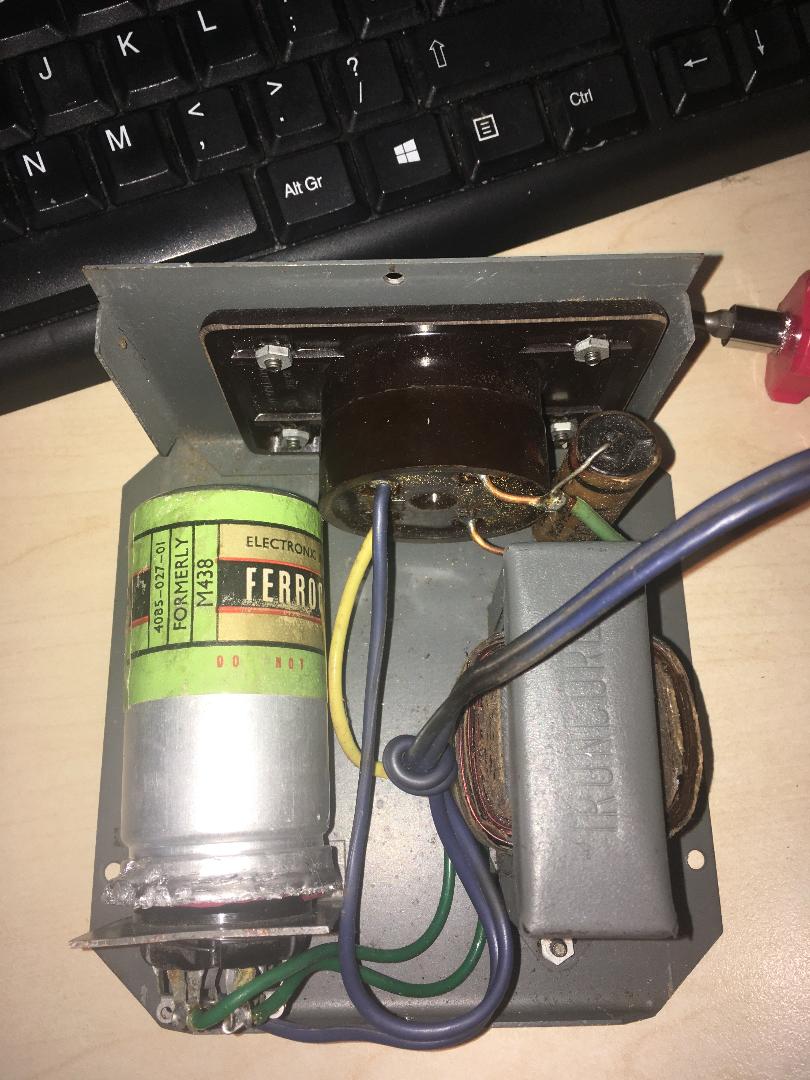Shaver converters became popular in the post WW2 era, when more people started to own cars in Australia, and caravanning and boating started to become popular. Electric shavers of the time were often driven by a miniature brush motor. This of course, allowed them to run on DC mains. Thus, many models of shaver converter provided DC output. The Ironcore T4/114 described here is one such model. Input is 12VDC and output is 240VDC at 15W. It is intended to be mounted in a car, caravan, or boat, and has a length of twin flex terminated in a pair of battery clips.
Inside the converter.
Inside the unit reveals a standard synchronous vibrator power supply. Conveniently, as most vibrator car radios have a B+ of around 240V, it means existing off the shelf vibrator transformers were often used in these converters. The common 60mA rating of these transformers happens to meet the 15W output perfectly. In fact, a fairly common practice at the time was to modify the radio in the car for shaver use. If you see a three pin 240V socket on the side of a valve car radio, do not be alarmed - someone has used their shaver off its power supply!
One of the virtues of vibrator power supplies is their simplicity. Note how few components are required. Here, the manufacturer has used a transformer tagboard to mount the parts. The voltage stampings are clearly visible in the tagboard.
The Circuit.

As can be seen, the circuit is completely
standard except for one thing. There is no power switch as such. Instead,
the three pin socket serves the purpose. The presence of the earth pin
completes the 12V circuit. The socket is one where the earth pin has been
split in half, each with its own connection. When a plug is inserted, the
two earth contacts thus make connection. By including this in series with
the 12V supply, the inverter is switched on automatically when the plug
is inserted. The particular socket is commercially made and it appears
its official use might have been for an automatic switch. Possibly the
earth pin circuit switched a relay which then switched the 240V to the
socket.
An obvious limitation is with two pin
plugs. However, such things did not exist back when this converter was
manufactured.
Electrically, the circuit is otherwise conventional. The vibrator is an Oak/MSP V5258 12V synchronous type. Buffer capacitance consists of two .1uF condensers, each with a series 27R resistor. These resistors limit the capacitor discharge current when the vibrator secondary contacts close, effectively reducing the "splat" factor. The DC output is filtered with a .5uF condenser. Given the non critical motor load, filtering does not need to be perfect, and there is about 10V peak to peak ripple with a 15W load. There is a good reason why an electrolytic condenser cannot be used here, and that is because with a synchronous vibrator, the output polarity is dependent on that of the input.
As I got the inverter, there was no fuse, so I fitted an inline 3AG fuseholder with a 5A fuse. The two .1uF's and .5uF were paper, so were replaced. I used a .56uF to replace the .5uF as the latter is not a preferred value.
Here the inverter is powering a 15W light bulb. Cover off the vibrator
shows no sparking.
The vibrator was in good clean condition and only needed minor contact cleaning to restore operation. The inverter has appeared to have had little use.
A compact fluoro is a suitable modern day DC load.
Now, what use is 240VDC in the modern day you may ask? There's actually quite a few loads that are happy with DC. Anything that rectifies the mains is an obvious candidate. This includes things like switchmode power supplies. For example, phone and USB chargers. Even modern shavers with a SMPS will work! The example I've shown here is an 11W compact fluorescent lamp. Because of the high efficiency of a synchronous vibrator power supply, this is an ideal way to drive a CFL from 12V. There are also some LED lamps that use a SMPS, so are also suitable.


Advertisement from 1954. At right is a version owned by a reader
- it uses a PM238 non-synchronous vibrator and provides AC output at 150c/s.
It appears to be the model in the advertisement.